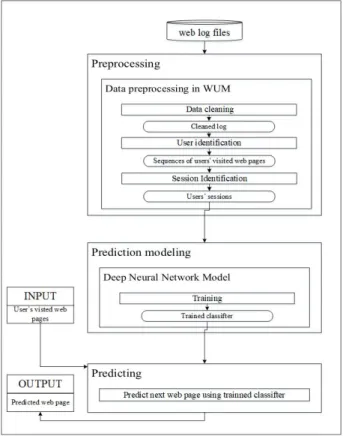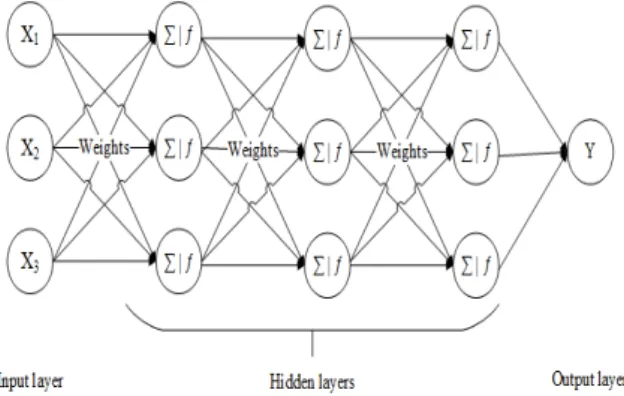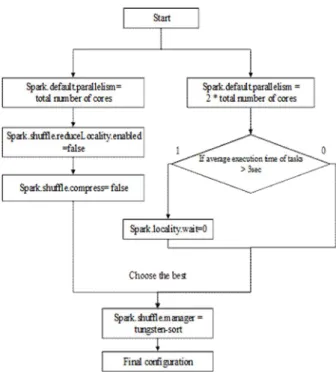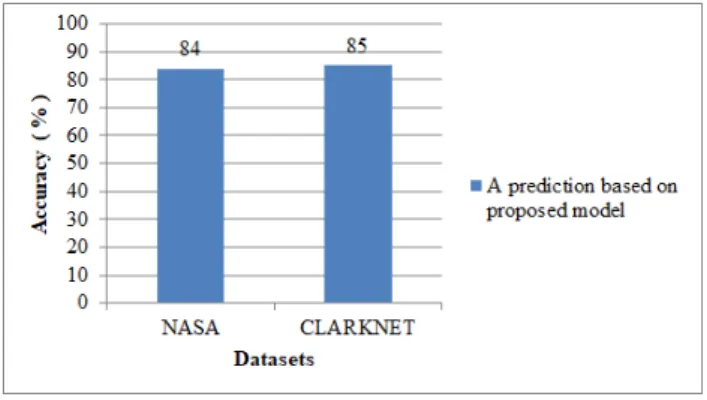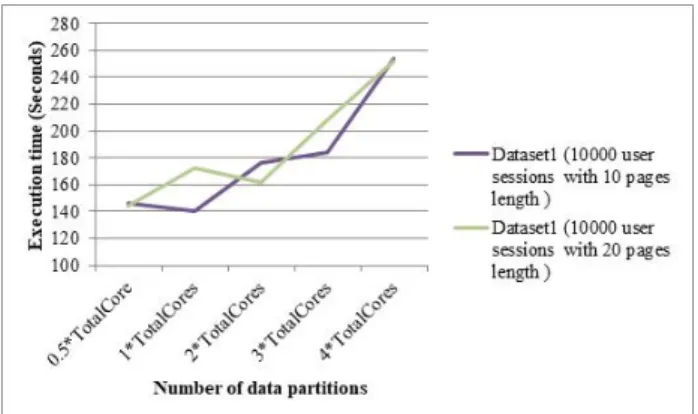JKSCI
Web access prediction based on parallel deep learning
1)
Gantur Togtokh*, Kyung-Chang Kim**
* Assistant Professor, Dept. of Information Technology, Ulaan Baatar University, Mongolia
**Professor, Dept. of Computer Engineering, Hongik University, Seoul, Korea [Abstract]
Due to the exponential growth of access information on the web, the need for predicting web users’
next access has increased. Various models such as markov models, deep neural networks, support vector machines, and fuzzy inference models were proposed to handle web access prediction. For deep learning based on neural network models, training time on large-scale web usage data is very huge. To address this problem, deep neural network models are trained on cluster of computers in parallel. In this paper, we investigated impact of several important spark parameters related to data partitions, shuffling, compression, and locality (basic spark parameters) for training Multi-Layer Perceptron model on Spark standalone cluster. Then based on the investigation, we tuned basic spark parameters for training Multi-Layer Perceptron model and used it for tuning Spark when training Multi-Layer Perceptron model for web access prediction. Through experiments, we showed the accuracy of web access prediction based on our proposed web access prediction model. In addition, we also showed performance improvement in training time based on our spark basic parameters tuning for training Multi-Layer Perceptron model over default spark parameters configuration.
▸Key words: Apache Spark, Neural network, Parallel deep learning, Parameter tuning, Web access prediction [요 약]
웹에서 정보 접근에 대한 폭발적인 주문으로 웹 사용자의 다음 접근 페이지를 예측하는 필요성 이 대두되었다 . 웹 접근 예측을 위해 마코브(markov) 모델, 딥 신경망, 벡터 머신, 퍼지 추론 모델 등 많은 모델이 제안되었다. 신경망 모델에 기반한 딥러닝 기법에서 대규모 웹 사용 데이터에 대 한 학습 시간이 엄청 길어진다. 이 문제를 해결하기 위하여 딥 신경망 모델에서는 학습을 여러
컴퓨터에 동시에 , 즉 병렬로 학습시킨다. 본 논문에서는 먼저 스파크 클러스터에서 다층
Perceptron 모델을 학습 시킬 때 중요한 데이터 분할, shuffling, 압축, locality와 관련된 기본 파라미 터들이 얼마만큼 영향을 미치는지 살펴보았다. 그 다음 웹 접근 예측을 위해 다층 Perceptron 모델 을 학습 시킬 때 성능을 높이기 위하여 이들 스파크 파라미터들을 튜닝 하였다 . 실험을 통하여 논문에서 제안한 스파크 파라미터 튜닝을 통한 웹 접근 예측 모델이 파라미터 튜닝을 하지 않았 을 경우와 비교하여 웹 접근 예측에 대한 정확성과 성능 향상의 효과를 보였다.
▸주제어: 아파치 스파크, 신경망, 병렬 딥러닝, 파라미터 튜닝, 웹 접근 예측
∙First Author: Gantur Togtokh, Corresponding Author: Kyung-Chang Kim
*Gantur Togtokh (gantur.t@gmail.com), Dept. of Information Technology, Ulaan Baatar University **Kyung-Chang Kim (kckim@hongik.ac.kr), Dept. of Computer Engineering, Hongik University
∙Received: 2019. 10. 31, Revised: 2019. 11. 27, Accepted: 2019. 11. 27.
Copyright ⓒ 2019 The Korea Society of Computer and Information http://www.ksci.re.kr pISSN:1598-849X | eISSN:2383-9945
